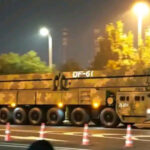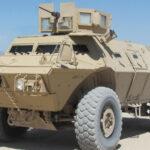Amid growing concerns over the use of commercial drones for espionage and potential attacks on critical infrastructure, the US military has begun deploying rapidly deployable counter-unmanned aerial systems (C-UAS) known as “Flyaway Kits” to domestic air bases. Designed for quick setup and mobility, these kits combine radar, electro-optical sensors, and electronic warfare capabilities to detect and neutralize small drones.
Why Drone Threats Are Escalating at Home
The proliferation of low-cost commercial drones has created a new vector of risk for military installations within the continental United States. Over the past several years, there have been multiple incidents involving unidentified drones loitering near sensitive sites such as nuclear facilities and Air Force bases. In 2023 alone, over 1,000 drone incursions were reported near Department of Defense (DoD) installations globally—many in or near U.S. airspace.
While some incidents may be attributed to hobbyists or benign actors, others raise serious security concerns. Reports have indicated that foreign intelligence services may be using modified commercial UAVs for surveillance or probing base defenses. The Pentagon has acknowledged that adversaries like China and Russia are actively exploring asymmetric uses of small drones to exploit gaps in traditional air defense systems.
What’s Inside a Flyaway Kit?
The U.S. Air Force’s Flyaway C-UAS kits are modular systems designed for rapid deployment and flexible operation across diverse environments—from fixed installations to forward-operating locations. Each kit typically includes:
- Radar Sensors: Short-range radar units capable of detecting low-RCS (radar cross-section) targets like quadcopters at ranges up to several kilometers.
- EO/IR Cameras: Electro-optical/infrared imaging systems provide visual confirmation and tracking of aerial targets.
- RF Detection: Passive radio-frequency sensors identify control signals used by commercial drones.
- Electronic Warfare (EW) Components: Directional RF jammers or spoofers disrupt drone command links or GNSS signals to force a landing or return-to-home behavior.
- Command & Control Interface: A ruggedized laptop or tablet running integrated software that fuses sensor feeds and allows operators to assess threats in real time.
The kits are designed to be man-portable or vehicle-mounted depending on mission requirements. They can be set up in under an hour by a two- or three-person team without specialized tools.
Contractors Behind the Capability
The Flyaway Kit initiative draws on technologies developed by multiple U.S.-based defense tech firms specializing in counter-drone solutions. Among them are Dedrone and Anduril Industries—both of which have received DoD contracts related to C-UAS deployments at domestic bases.
- Dedrone: Known for its RF-based detection suite and AI-driven DroneTracker software platform. Dedrone’s modular architecture allows integration with third-party effectors including jammers and kinetic interceptors.
- Anduril Industries: Developer of Lattice OS—a sensor fusion platform—and various autonomous surveillance towers and EW payloads used in both border security and base protection roles.
- Sierra Nevada Corporation (SNC): Another key player providing mobile EW components compatible with expeditionary setups like the Flyaway Kit concept.
The Air Force Life Cycle Management Center (AFLCMC), which oversees acquisition programs for base defense technologies under its Force Protection Division at Hanscom AFB, is managing procurement efforts alongside operational testing units such as the Joint C-sUAS Office (JCO).
Tactical Role Within Base Defense Architecture
The Flyaway Kits are not intended to replace permanent air defense infrastructure but rather fill an urgent capability gap against Class I (<20 kg) UAVs operating below traditional radar coverage altitudes (~500 ft). They complement existing SHORAD assets like Avenger systems or NASAMS batteries by focusing on low-altitude threats where kinetic interceptors may be cost-prohibitive or unavailable.
This modularity also enables their use during temporary high-risk events—such as presidential visits, large-scale exercises like Red Flag, or when threat intelligence indicates elevated drone activity near specific installations. The kits can also support overseas deployments where fixed infrastructure is limited but drone threats persist—such as in CENTCOM’s area of responsibility where Iranian-made UAVs have targeted coalition forces using proxy groups.
Evolving Doctrine Around Domestic C-UAS Ops
A key challenge remains legal authority over drone mitigation within U.S. borders due to FAA regulations governing national airspace. While DoD has limited authority under Section 130i of Title X U.S.C., coordination with federal agencies such as DHS and DOJ is required when deploying active countermeasures outside military property boundaries.
This legal complexity has driven interest in non-kinetic options like RF jamming that can remain within compliance frameworks while still disrupting hostile UAV operations within base perimeters. Ongoing interagency working groups are refining doctrine around detection thresholds, rules-of-engagement (ROE), data sharing protocols with local law enforcement, and post-incident forensic analysis using captured telemetry data from downed drones.
The Road Ahead: Scaling Up & Integrating AI
The Pentagon plans further investment into AI-enhanced threat classification algorithms that reduce operator workload by automating target identification based on flight patterns, RF signature libraries, and visual recognition databases. The goal is a semi-autonomous “detect-decide-defeat” loop capable of handling swarming scenarios without human bottlenecks.
A recent FY2025 budget request includes $75 million earmarked specifically for domestic C-UAS capability expansion across all service branches—a significant uptick from previous years reflecting institutional recognition of the threat’s persistence. Additional field trials are expected later this year at Joint Base San Antonio-Lackland and Nellis AFB following successful evaluations at Eglin AFB earlier in Q1/2024.









